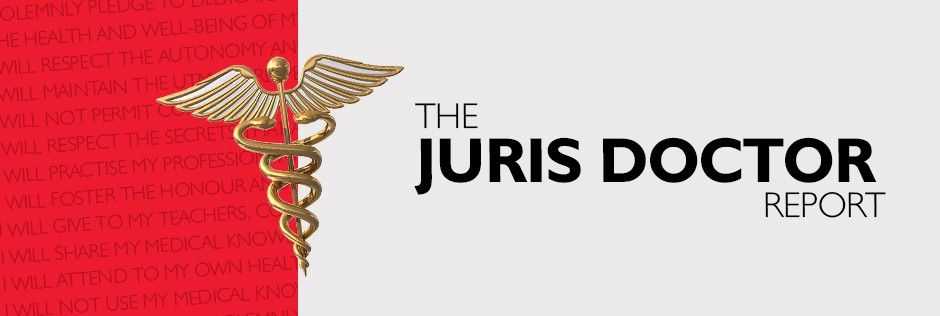For more information about this blog post, please contact Khaled J. Klele, Ryan M. Magee, Labinot Alexander Berlajolli, or Daniel J. Parziale.
New Proposed Rules Limit Prescribing, Administering, or Dispensing Controlled Dangerous Substances
The New Jersey State Board of Dentistry, New Jersey Board of Nursing, and New Jersey State Board of Optometrists (collectively, the “Boards”) each released a proposed rule aimed at addressing New Jersey’s ongoing opioid epidemic and further increasing the public availability of the overdose‑reversal drug, naloxone. Each proposed rule would require co‑prescribing of an opioid antidote like naloxone if, as part of the treatment of chronic pain, the patient has one or more prescriptions totaling 90 morphine milligram equivalents or more per day, or is concurrently obtaining an opioid and a benzodiazepine. The proposed rules also would modify the timing of the requirement to enter into a pain management agreement prior to the commencement of an ongoing course of treatment for chronic pain. Currently, a pain management agreement is not required until issuance of the third prescription for a controlled dangerous substance or opioid drug.
Each proposed rule is available here: New Jersey State Board of Dentistry, New Jersey Board of Nursing, and New Jersey State Board of Optometrists. Comments are due by March 20, 2021.
Additionally, the New Jersey Board of Medical Examiners (the “BME”) has already adopted similar rules regarding limitations on prescribing, administering, or dispensing controlled dangerous substances and managing acute and chronic pain, applicable to physicians, podiatrists, physician assistants, and certified nurse midwives. The BME’s rules were effective January 19, 2021.
Biden Withdraws Guidelines Regarding the X-Waiver for Opioid Prescriptions
In one of our previous posts, we noted that the Department of Health and Human Services (“HHS”) released new practice guidelines that eliminate the requirement that physicians obtain a federal X-waiver to prescribe buprenorphine, commonly known as suboxone, a medication traditionally used to treat opioid use disorders. President Biden, however, has recently withdrawn the guidelines.
Proposed Rules by New Jersey State Board of Physical Therapy Examiners
The New Jersey State Board of Physical Therapy Examiners (the “Board”) has proposed to readopt N.J.A.C. 13:39A with amendments, repeals, and new rules. Among other things, the proposed rules overhaul provisions regarding the licensing and credentialing of physical therapists and physical therapist assistants. Comments are due by March 20, 2021.
New Jersey Legislature Passes New Law Requiring healthcare Providers to Report COVID-19 Data Related to healthcare Workers and Certain First Responders
On Thursday, February 4, 2021, Governor Murphy signed into law a bill (A4129/S2384) establishing certain reporting requirements for healthcare facilities with regard to COVID-19. The new law specifically requires that general acute care hospitals, special hospitals, ambulatory care facilities, ambulatory surgical centers, assisted living facilities, home health agencies, nursing homes, and hospice programs (collectively “covered entities”) are required to report to the Department of Health (“DOH”) data on the number of healthcare professionals, ancillary healthcare workers, and emergency medical services personnel affiliated with the facility who tested positive for COVID-19 and who died from COVID-19. To that end, the new law requires the DOH to issue guidance concerning the specific healthcare professionals, ancillary healthcare workers, and emergency medical services personnel for whom reporting will be required.
Additionally, the new law requires the covered entities to adopt standards, procedures, and protocols to evaluate and mitigate the risk of exposure to, and spread of, COVID-19 in healthcare settings, which standards, protocols, and procedures are to be consistent with guidance currently published by the DOH and the federal Centers for Disease Control and Prevention.
Finally, the new law requires that, no later than 60 days after the end of the state of emergency declared in response to the COVID-19 pandemic, the covered entities are required to complete an analysis of COVID-19 exposures identified throughout their workforces during each month of the COVID-19 emergency, along with the measures taken by the covered entities to respond to or mitigate the risk of exposure. Similarly, the new law requires that no later than 120 days after the end of the state of emergency declared in response to the COVID-19 pandemic, the Commissioner of Health is required to submit a report to the Governor and to the Legislature outlining the aggregated data and findings in the confidential reports and outlining the commissioner’s findings and recommendations for legislation or other action to mitigate the risk of exposure and spread of communicable diseases among staff and personnel of the covered entities during a communicable disease outbreak, epidemic, or pandemic.




